The Yellow Bridge:
A Design for Connection and Community
Milan, Italy
Project by
Adipa Klomchitcharoen
︎
Nuova Accademia di Belle Arti
Environmental Design
This project focuses on the environmental design of "The Yellow Bridge," located on Alzaia Naviglio Pavese in Milan. The bridge, a key transitional space within the neighbourhood, connects commercial and residential areas and serves as a passage for pedestrians and cyclists. Despite its functional significance, the bridge lacks certain elements that enhance user experience, such as inclusivity, safety, and comfort.
Key proposals include introducing design interventions that encourage greater interaction while maintaining the space’s peaceful and natural character. The introduction of seating, ecological installations, and elements that create a sense of safety and comfort will encourage longer stays and greater inclusivity. Additionally, the project brings attention to environmental issues like water pollution in the canal and seeks to collaborate with eco-conscious art movements like Cracking Art to promote sustainability.
This proposal aims to transform the Yellow Bridge into a more inclusive, vibrant, and ecologically mindful public space, enhancing its role as both a transit corridor and a place for leisure and social interaction.
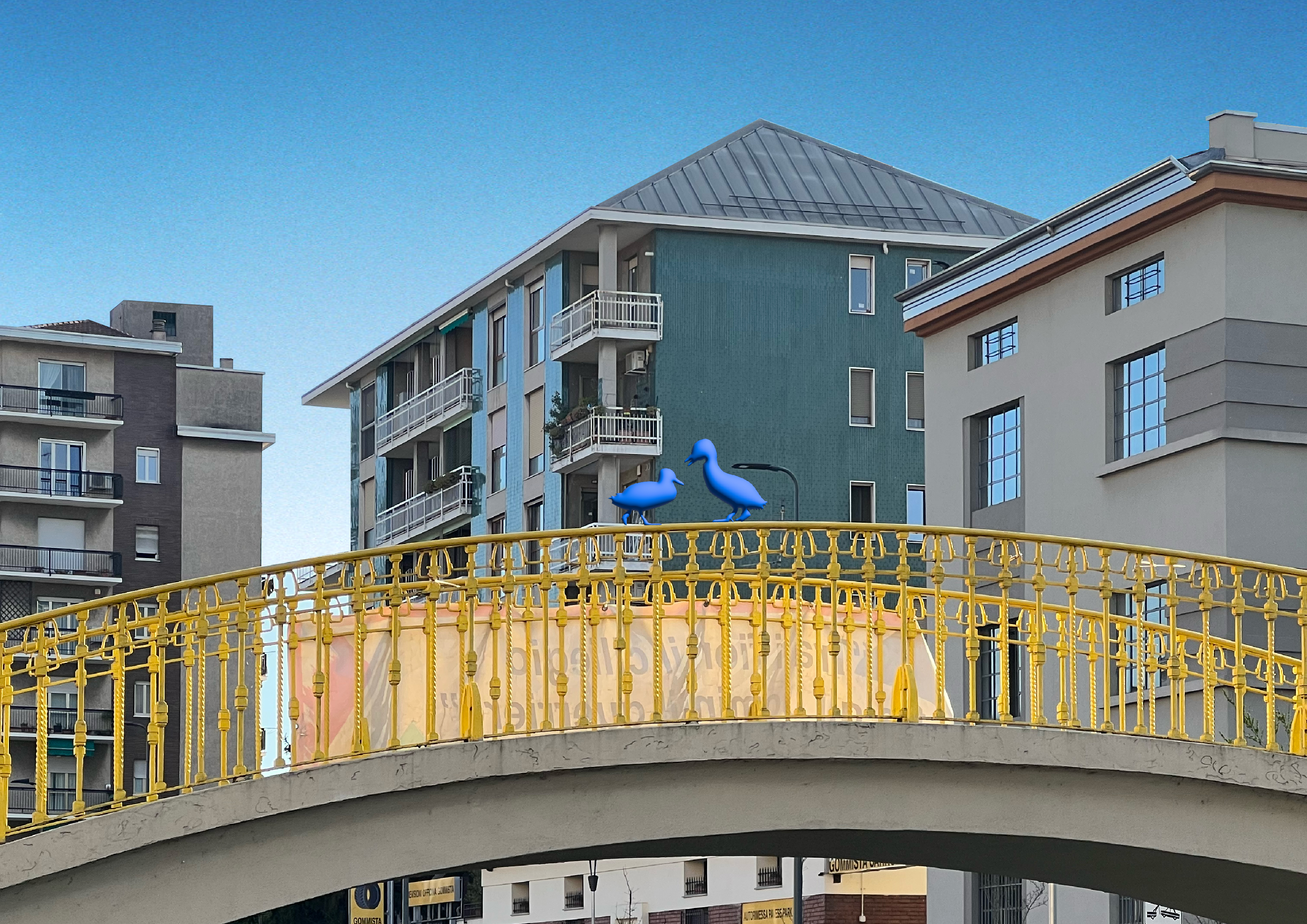
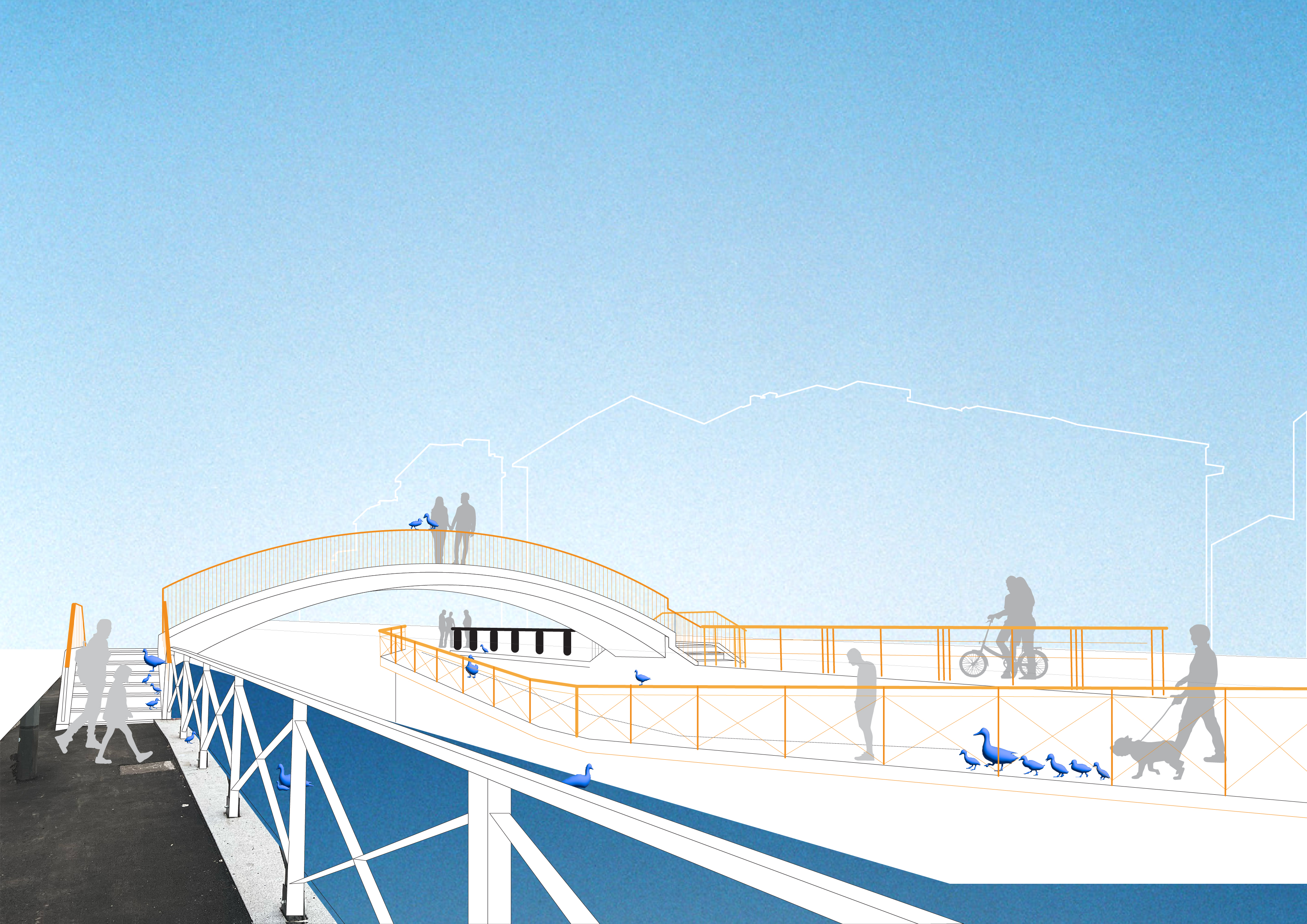
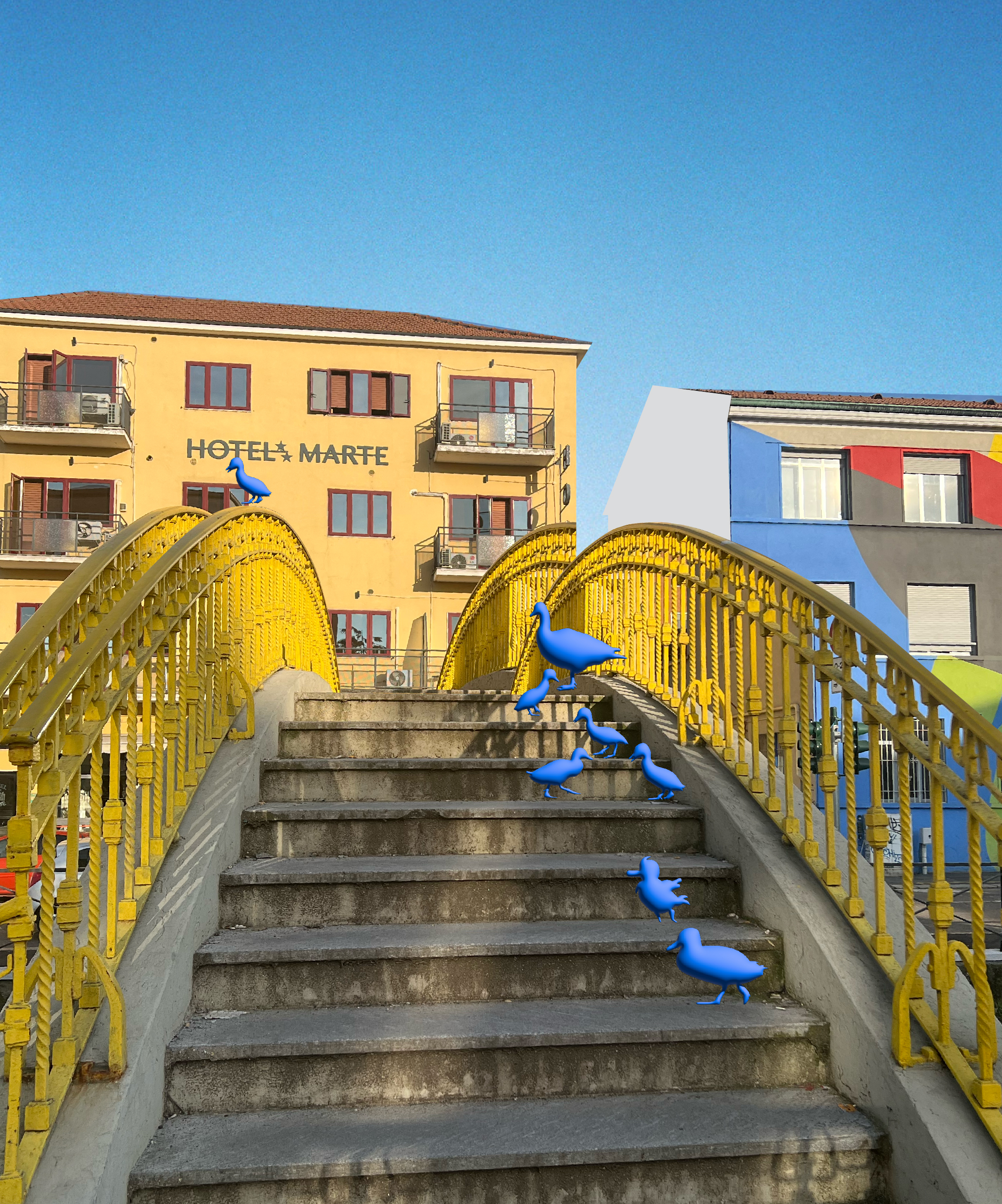

Using ducks as the central concept for public activation at the Yellow Bridge aligns with both the character of the space and the project's objectives.
/Emotional Connection and Joy
Ducks bring joy, wonder, and playfulness to urban settings. They break the monotony of daily life, offering a lighthearted interaction that can brighten even the gloomiest days and create a positive emotional connection with the space.
/Natural Integration & Environmental Awareness
Ducks fit well within this environment, enriching the space’s connection to nature while maintaining its peaceful ambiance. They also draw attention to local environmental issues such as canal pollution. By incorporating eco-conscious art movements like Cracking Art, which uses recycled plastic, the project symbolically ties the ducks to sustainability, adding an educational component and promoting ecological responsibility in the public space.
/Inclusivity and Gender Balance
Ducks are expected to make the space more inviting for underrepresented groups like women and children. With 72% of current users being men, ducks, as a friendly symbol, create a welcoming atmosphere for families and younger visitors, helping balance the demographic and promote inclusivity and safety.
/Encouraging Interaction and Socialisation
Ducks act as a conversation starter and create an opportunity for users to pause, observe, and socialise.
/Childlike Wonder and Accessibility
The concept of ducks, much like in Florentijn Hofman’s Rubber Duck installation, taps into childlike curiosity, offering a playful escape from the routine of urban life. By doing so, the installation would appeal to people of all ages, making the space accessible and enjoyable for everyone, from children to seniors.
Mappings:
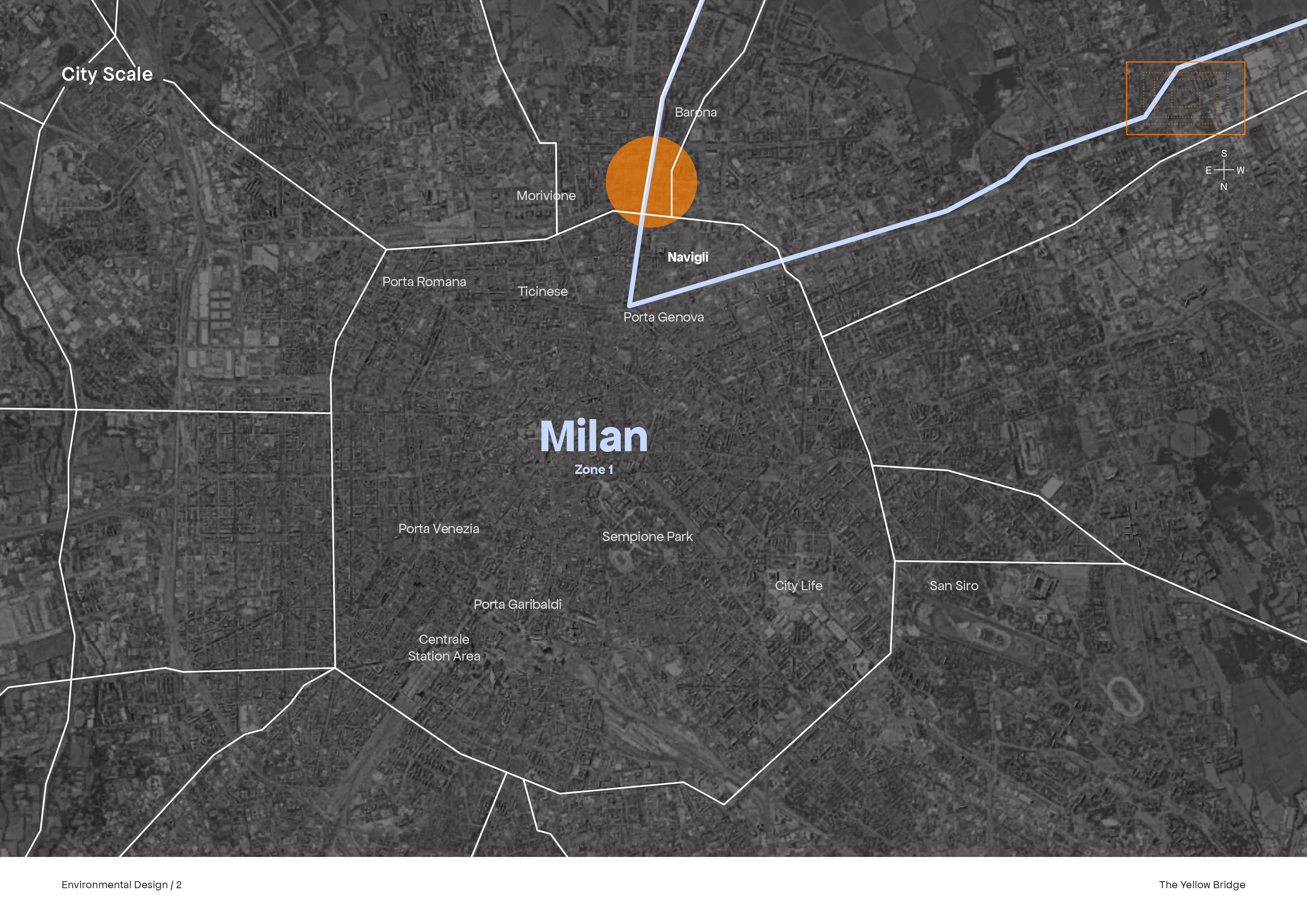
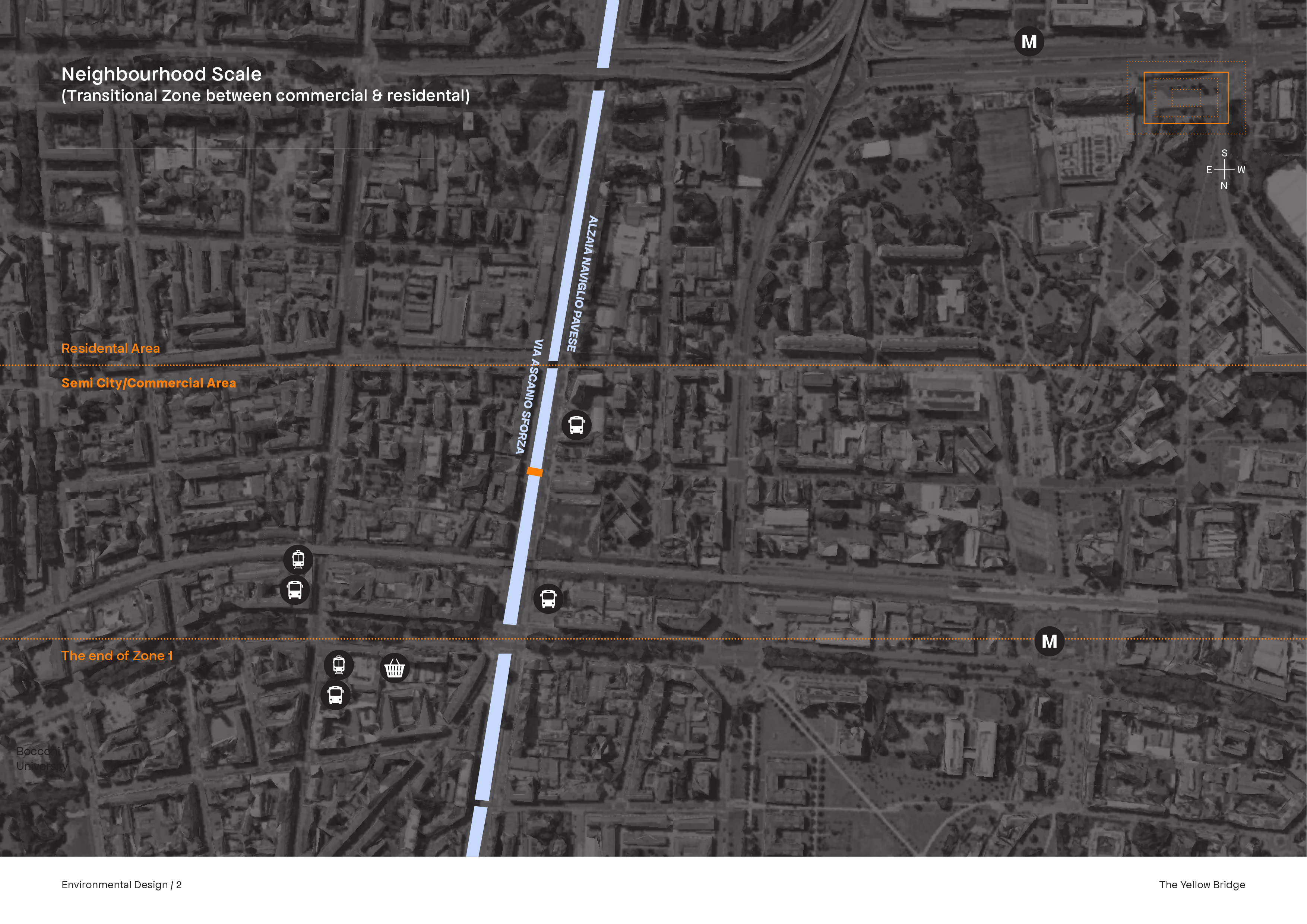



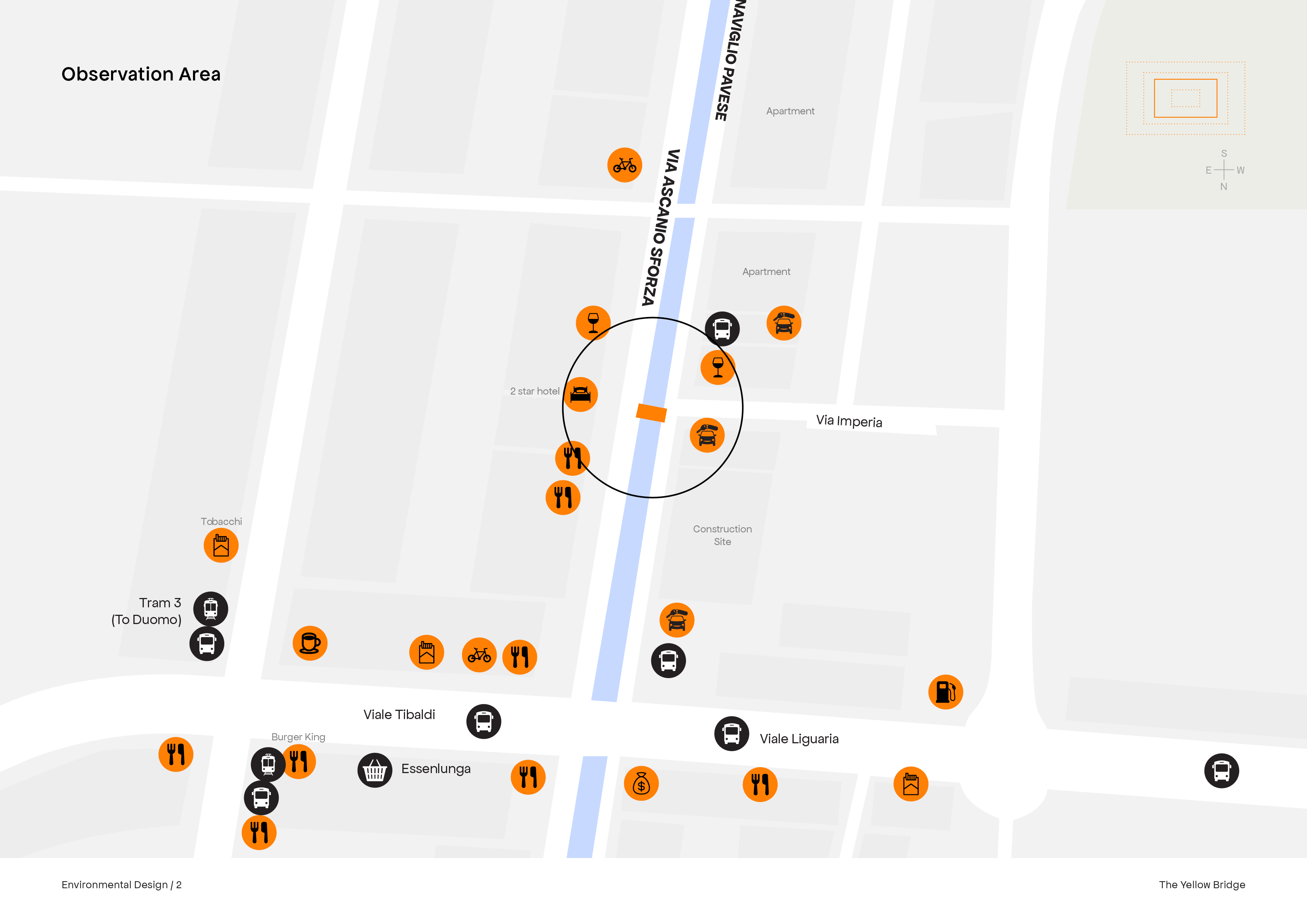
Observation Area Mappings:
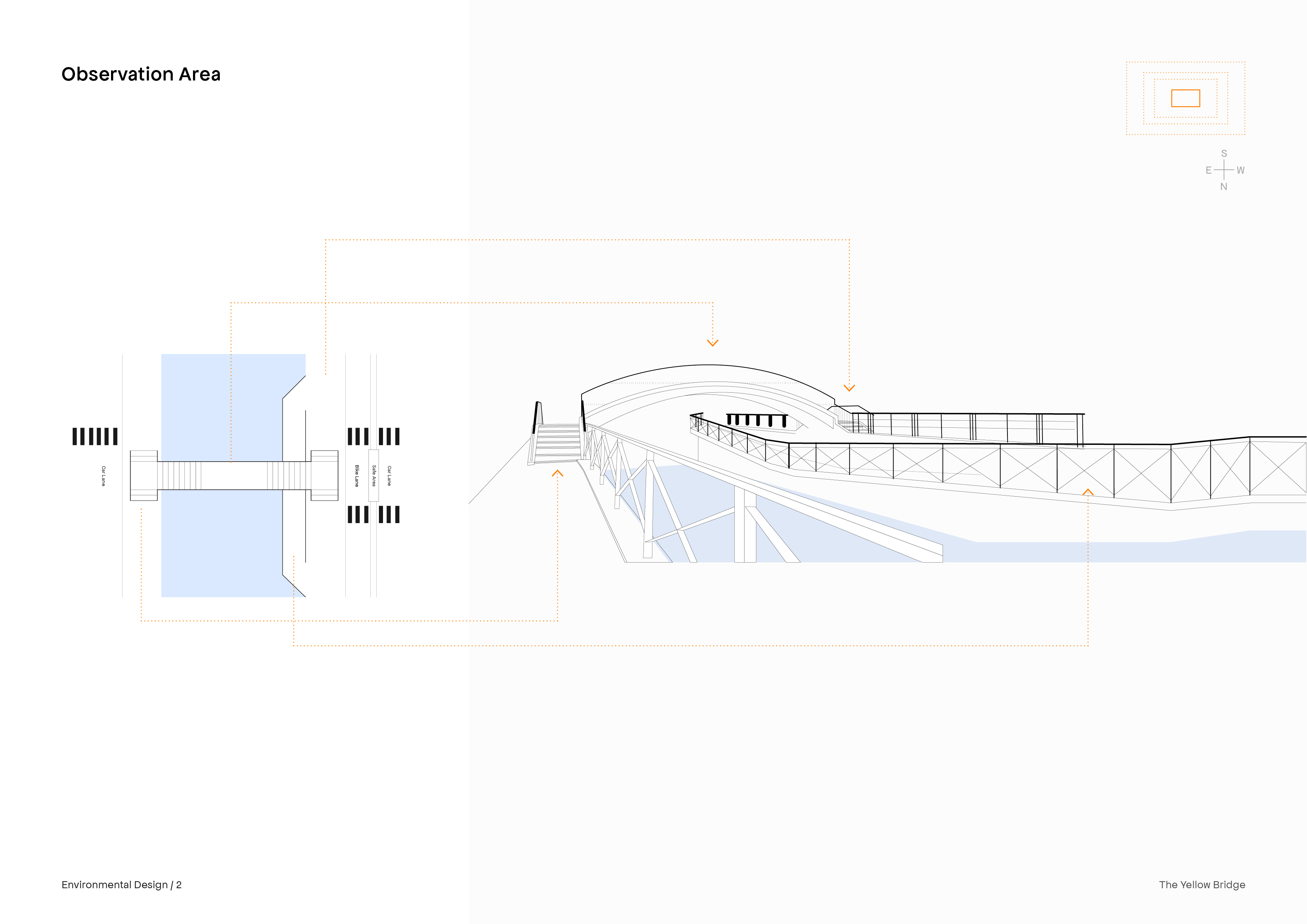



Ghel Tools

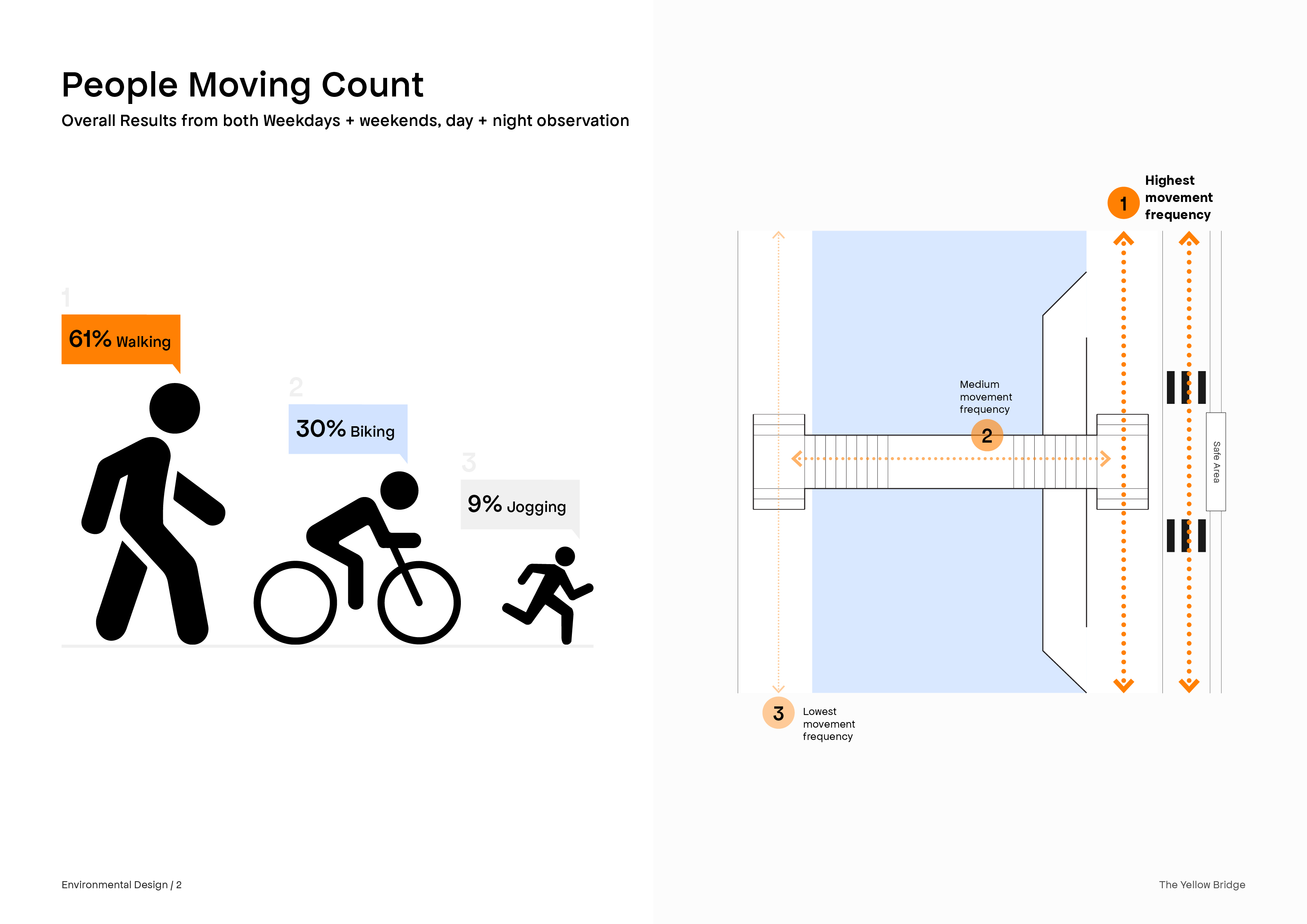






Projects
Brand Design
Social Design
About me
Brand Design
Social Design
About me